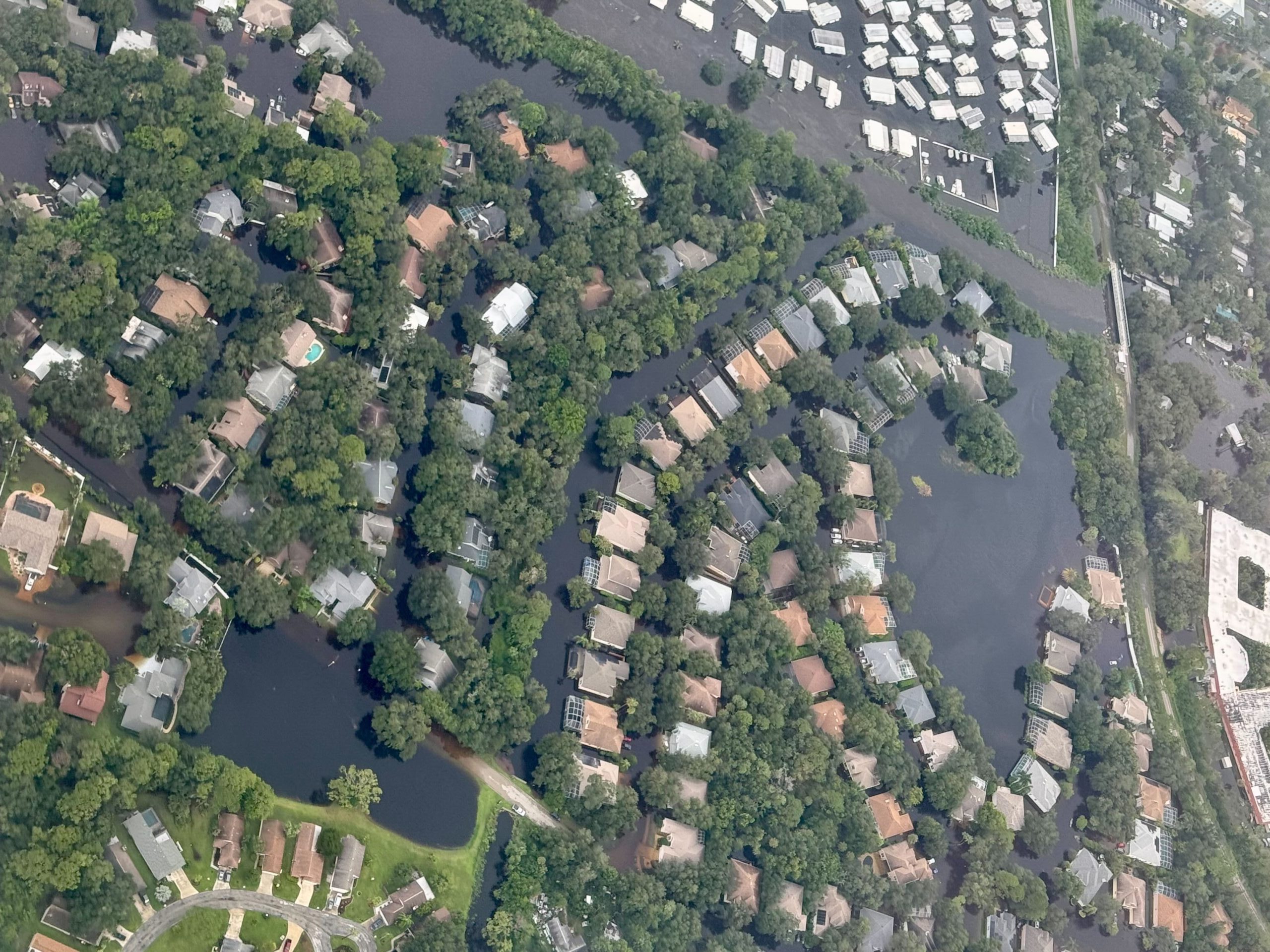When the flooding is worse than the hurricane

Floods are frequent, dangerous, deadly and costly. In the U.S., the National Flood Insurance Program estimates that just one inch of rainfall in your home costs a minimum of $25,000 in damage.
Next month, I’ll celebrate my sixth anniversary at CDP. Watching the predictions for Hurricane Debby and its anticipated stall over South Carolina took me right back to my start at CDP in 2018. In my second work week, I flew to Nashville for orientation and instead dealt with our plans for responding to Hurricane Florence.
Hurricanes and flooding
Previously, I had responded to floods and hurricanes and considered them essentially equal in the impact they could have. After all, I live in New Orleans, where hurricanes and flooding are nearly synonymous. But I didn’t realize how differently they are treated from a philanthropic perspective. While I am used to the philanthropic outpouring that often follows a hurricane, I didn’t know how quiet giving could be after a flood.
Debby and Florence were both Category 1 hurricanes that caused massive flooding. In the lead-up and aftermath, attention was highly focused on winds, not water. Some of this is to be expected since the Saffir-Simpson Hurricane Wind Scale, the most widely used tool to rate hurricanes, only measures wind speeds. While it is simple and easy for a layperson to understand, it doesn’t account for rainfall, storm surge or the size of a storm, all important factors in the amount of damage.
This can create a false sense of security. If someone lives far away from the anticipated landfall or sees that winds won’t be high when the storm reaches them, they may not pay attention or adequately prepare for it. In New Orleans, a mandatory evacuation is only called when major hurricanes (Category 3-5) are expected with several days’ notice. However, even a more minor hurricane can be extremely dangerous, trapping residents in homes or vehicles.
Flooding by the numbers
The International Disaster Database (EM-DAT) 2023 Disasters in Numbers report found that in 2023:
- There were 164 flood disasters globally. It was the hazard with the most disaster events associated with it.
- Four of the top 10 high-mortality events were floods, and two others were tropical systems with related flooding. There were 7,763 deaths directly attributable to flooding.
- At least 32.4 million people were affected by floods. Not only did flooding affect the highest number of people, but seven of the Top 10 events included flooding.
- Floods in 2023 were less costly than usual but still caused $20.4 billion in economic loss.
These numbers are also significant in the U.S., where floods annually cause the second-highest number of weather deaths after heat – an average of 103 per year from 2014-2023. Floods are also one of the costliest weather events in the country. Almost all U.S. states experience more than $50 million in flood damage every year.
Types of flooding
Flooding can be a slow-moving or a sudden-onset disaster, with the latter usually getting more media attention. On Aug. 18, several Connecticut towns were hit by 1000-year flood events, and Montreal saw massive flooding from a burst water main a few days prior. In addition to being sudden, both flooding events impacted urban areas, which resulted in increased attention.
Snowmelt, ice jams, derechos and rain led to flooding in several Midwest states earlier this year. These happened in primarily rural areas and occurred over several days and weeks rather than hours. These floods didn’t grab headlines like those in Connecticut or Montreal, even though half of Minnesota was impacted by flooding at the end of June.
While riverine flooding can often be predicted, allowing local and state governments the opportunity to prepare populations, open dams and spillways to absorb runoff and otherwise accommodate flood risks, this can’t always happen. For example, flash flooding from sudden rainfall is more difficult to anticipate as it may result from a stalled rain band, dropping an unexpectedly high amount of rain in a short period. This happens regularly in New Orleans; as a resident, I’ve had to learn multiple ways to get in and out of my neighborhood, just in case.
Inland communities often ignore flooding risks, given their lack of proximity to bodies of water. But, land development, rapid urbanization, changing weather patterns and outdated flood policies have all contributed to increased risk of damage from localized flooding. One study from North Carolina estimated that “more than two-thirds of flood damage reports came from outside [flood] maps’ high-risk flood zones” – a shortfall of almost 800,000 square miles.
So, how can funders improve their philanthropic response to floods?
- Fund flood preparation and response. The amount of funding from philanthropic entities to support flood response and recovery is disproportionately low, given the number of floods. My colleague Austin Snowbarger pointed this out in his February blog, which looked at drought and flooding philanthropy. He shared that, according to our 2023 State of Disaster Philanthropy report, only 5.5% of philanthropic giving in 2021 went to flooding.
- Improve forecasting awareness. Learn about and encourage the public use of tools such as the Advanced Dvorak Technique (ADT), which uses satellite imagery to estimate tropical cyclone intensity. ADT is a widely used method, including by the National Weather Services, because it is automated, objective, more detailed and more accurate than using the Saffir-Simpson scale alone.
- Support all communities in engaging in flood-risk prevention and planning. Given the severity of inland flooding, all communities, not just those along a river or coast, need help to mitigate and adapt to the impacts of climate change. This includes education and the development of rain gardens and catch basin clean-up programs to absorb excess water.
- Address inequities in flood management. Like most hazards in the U.S., disasters caused by floods disproportionately impact racialized communities and people living in mobile homes, especially in Southern or rural states. Support programming that helps mitigate flood exposure.
